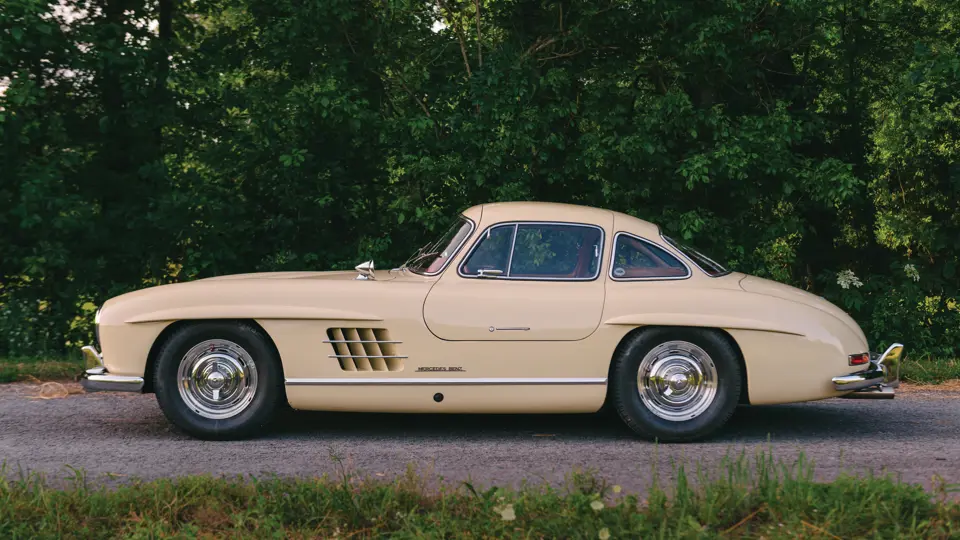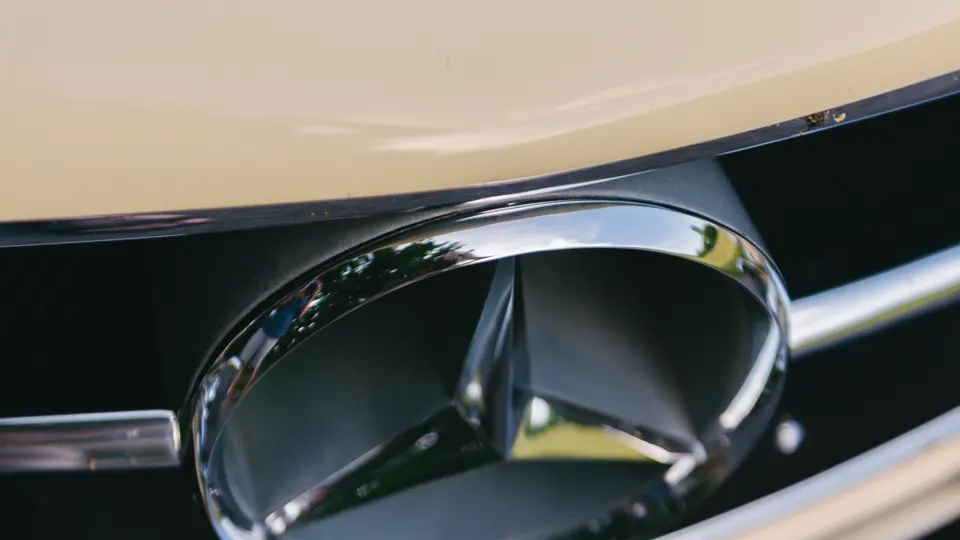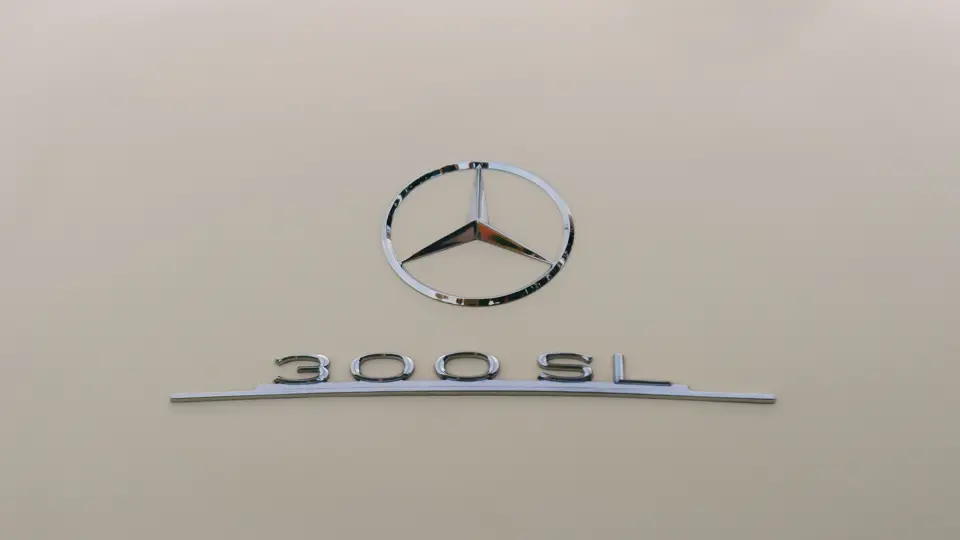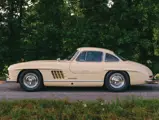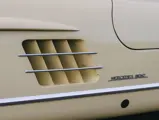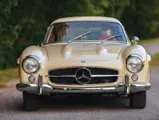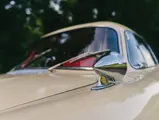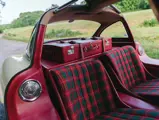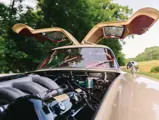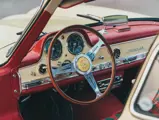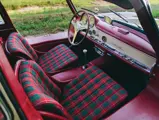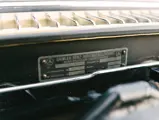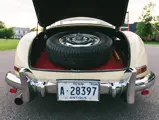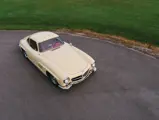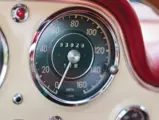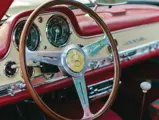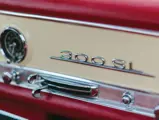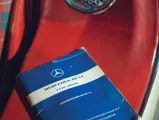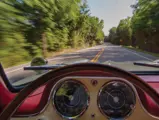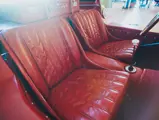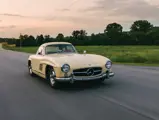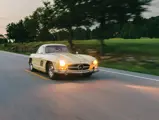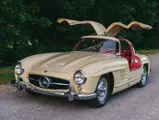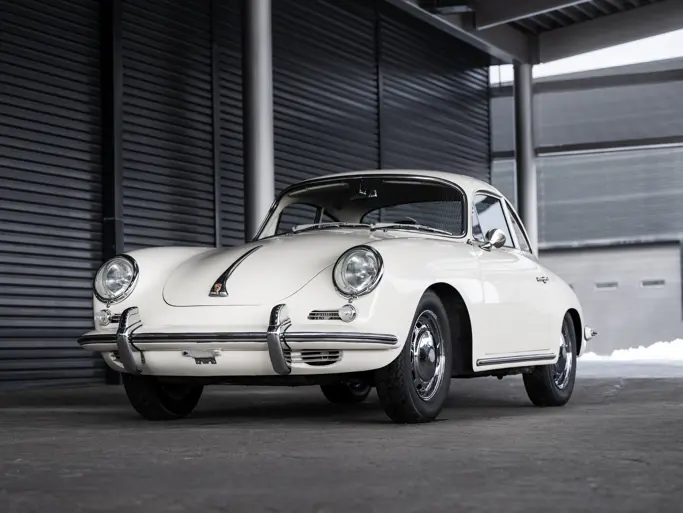215 hp (DIN), 240 hp (SAE), 2,992 cc SOHC six-cylinder engine with Bosch mechanical fuel injection, four-speed manual transmission, coil-spring independent front suspension, coil-spring and swing axle rear suspension, and four-wheel hydraulic drum brakes. Wheelbase: 94.5 in.
THE LEGENDARY GULLWING
Mercedes-Benz’s 300SL claimed 2nd in the Mille Miglia, 1-2-3 in the Berne, Switzerland, Sports Car Race, 1st and 2nd at Le Mans, 1-2-3-4 at the Nürburgring, and 1st and 2nd at La Carrera Panamericana. Yet more was to be desired. From his Frank Lloyd Wright-designed Park Avenue showroom, the company’s U.S. distributor, Max Hoffman, said that there was a market in America for a fast, sensual Mercedes-Benz coupe, and a production version of the racing 300 SL, complete with the fascinating, now legendary, “gullwing” doors, necessitated by the unusual, tall “birdcage” frame design, would be it.
Fuel injection replaced the race car’s carburetors, and the Bosch mechanical unit would be the first for a production car. The 11 prototype W194s, including the so-called “Hobel,” were made in all-alloy. The new Karl Wilfert-designed body was largely steel, retaining aluminum doors, hood, and trunk lids, and included bumpers (with over-riders for U.S.-spec cars but optional for the rest of the world) and numerous creature comforts, as well as a tilt-wheel for ease of entry and a sumptuous interior, which is a prerequisite for road use.
The “SL” moniker (translated to English as Sport Light) reflected the pioneering use of a welded, tubular-steel, ultra-light frame construction that weighed only 182 pounds. The car also featured a fully independent suspension in addition to its fuel-injected, 3.0-liter (2,996 cubic centimeter), OHC straight-six with dry-sump lubrication, and the motor was inclined to the side in order to reduce the height of the front end. The power, rated at 240 brake horsepower at 6,100 rpm (SAE) and 215 brake horsepower at 5,800 rpm (DIN), with the factory-optional or dealer-installed “sport” camshaft, was delivered through a four-speed manual gearbox. A 161-mph top speed and 0–60 acceleration of approximately eight seconds, depending on the rear-end ratio selected from five options, made the 300 SL the fastest production automobile of its time.
Appropriate for an automobile that Max Hoffman had almost single-handedly willed into being, the production 300 SL made its debut in the United States, not in Germany, which was a Mercedes first. More than 1,000 of the 1,400 cars produced between 1954 and early 1957 where delivered through Hoffman, to whose showrooms the rich and famous flocked. The 300 SL was as much a status symbol in its time as it is today, as it was favored by everyone from Hollywood stars to racing legends to genuine royalty.
The 300 SL was also raced and piloted by the top drivers of the day, such as John Fitch, Olivier Gendebien, Paul O’Shea, Prince Metternich, and, of course, Sir Stirling Moss, who holds the “forever” course record for his famous Mille Miglia finish in 1955. It all added to the romance of a car that seemed destined to become a legend the moment production began. It had all of the right ingredients: incredible exclusivity, incredible speed, and an incredible price. Any red-blooded human who had ever pushed a clutch pedal would’ve sold his or her soul for the feeling of 161 mph behind the wheel. “A thoroughbred in every sense of the word,” advertising boasted, “and a car which will be recognized by all enthusiasts as the ‘last word’ in sporting automobiles; a car which puts indescribable pleasure into driving!”
CHASSIS 198.040.5500368
The Gull Wing Group Register records chassis number 198.040.550368 as having been completed on May 31, 1955, and delivered as a special order on July 6, 1955, by Max Hoffman’s distributors in New York. The car was originally finished, as it is today, in the elegantly subtle color of Ivory (DB 608), with an interior in Red (1079) leather, and it was equipped with one of the most desirable options, chrome Rudge knock-off wheels.
The original owner was reportedly Buddy Champlin, the son of Oklahoma oil baron H.H. Champlin. The Champlin family’s other interests in the Sooner State included ownership of the First National Bank of Enid, of which Buddy Champlin would serve as president and CEO.
In 1973, after 28 years, Mr. Champlin’s 300 SL was listed for sale at $12,000 by the Mercedes-Benz dealership in Tulsa. It was purchased for $10,000 by a local man, David Rogers, who owned it for a very short time before passing it to Bob Boone, an Oklahoma University student. Boone, in turn, traded the 300 SL to Rennsport Werkstatt, of Tulsa.
While in the care of Rennsport Werkstatt, the 300 SL was fitted with new pistons, bearings, and chains, and the valves, water and oil pumps, injection pump, and fuel injectors were all rebuilt. New motor mounts and heating and cooling system pipes were installed, along with a new clutch disc, pressure plate, and throwout bearing. Remarkably, the wiring harness was able to be replaced with a complete new harness, which was acquired from Mercedes-Benz, and the interior was reupholstered in NOS factory leather, which was still available in 1974. All instruments were rebuilt at VDO. This work was performed with the odometer reading approximately 76,400 original miles.
The car was subsequently acquired from Rennsport Werkstatt by Gullwing enthusiast David Jahimiak, who owned the car until 1997, when it was acquired at the Door County Gull Wing Group’s annual convention by its present owner. The consignor notes that the 300 SL “showed only the expected long-term storage issues,” having been driven only about 200 miles in Mr. Jahmiak’s two-decade-long stewardship. In the care of Gullwing guru Albrecht Stachel’s Brooklyn Motoren Werke, it spent nearly six months being properly recommissioned, with virtually every mechanical component disassembled and inspected. Stachel insisted on riding with the owner during the drive back to the car’s new home in Tennessee, making fine adjustments to the fuel-injection system along the way.
Since then, this Gullwing has been driven to Gull Wing Group conventions in Asheville, North Carolina; Ann Arbor, Michigan; and Richmond, Virginia, as well as to several Ferrari Club events when the consignor's Ferrari refused to run! The Gullwing was voted First Place, Show Gullwing, no small accolade for an unrestored car, at the Gull Wing Group's 50th annual convention in Virginia in 2011.
The owner notes, “During my ownership, the Gullwing has been driven some 20,000 miles. The only breakdown occurred on a trip when running the lights, wipers, and auxiliary cooling fans exceeded the capacity of the generator and discharged the battery. Beyond this, a signal flasher unit was replaced and the radiator recored. That covered the sum-total of required repair work during my first 10 years of ownership. At this point, the car returned to Albrecht in Wisconsin for about six months. A full brake service was performed, along with the replacement of several leaking gaskets, and the Becker radio was repaired and indeed works well today. All service records from my ownership are with the car.”
This Gullwing is in utterly superb running and driving order, and it still wears its factory Rudge wheels and original belly pans, as well as its correct trunk mat, tire gauge, tool kit and folio, complete owner’s document case with the full set of manuals, official dealer service manual and parts book, jack and wheel chock, and red side-window folios. A period-correct Nardi steering wheel, a very popular accessory of the time, is fitted, but the original wheel, with some small cracks, will accompany the car. Correct red leather fitted luggage is stowed behind the seats, and the car is offered with a spare set of custom-made seat cushions, upholstered in the factory option of red tartan plaid.
This car is an exceptional Gullwing that has always been enthusiastically driven and enjoyed but never fully restored, and it is the ideal choice for the gentleman driver who prefers to run his 300 SL as Max Hoffman intended. It is offered today by an enthusiast to an enthusiast.




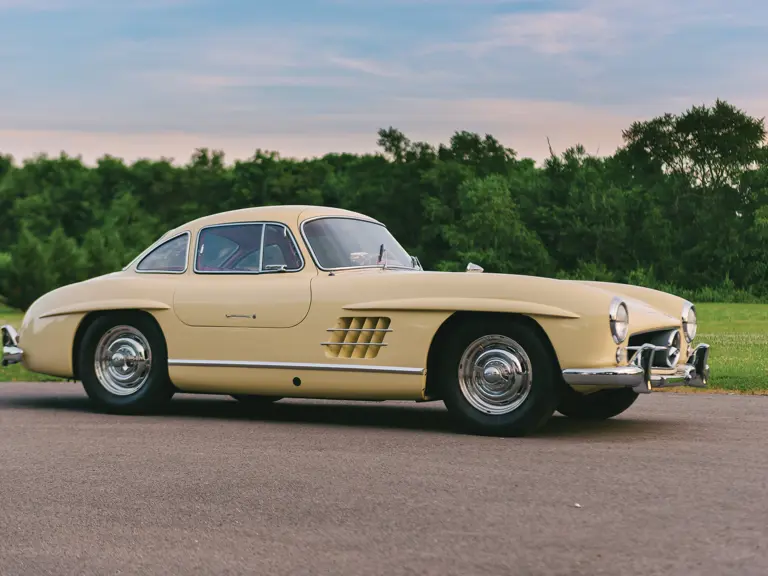
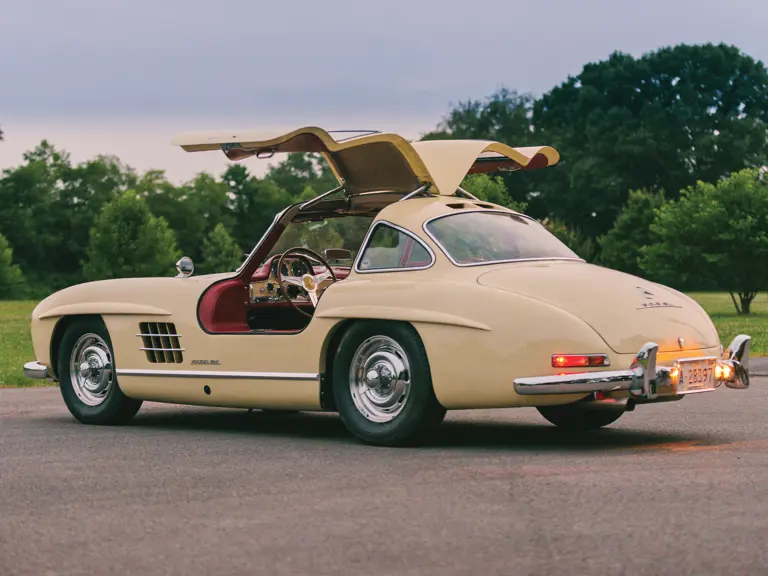
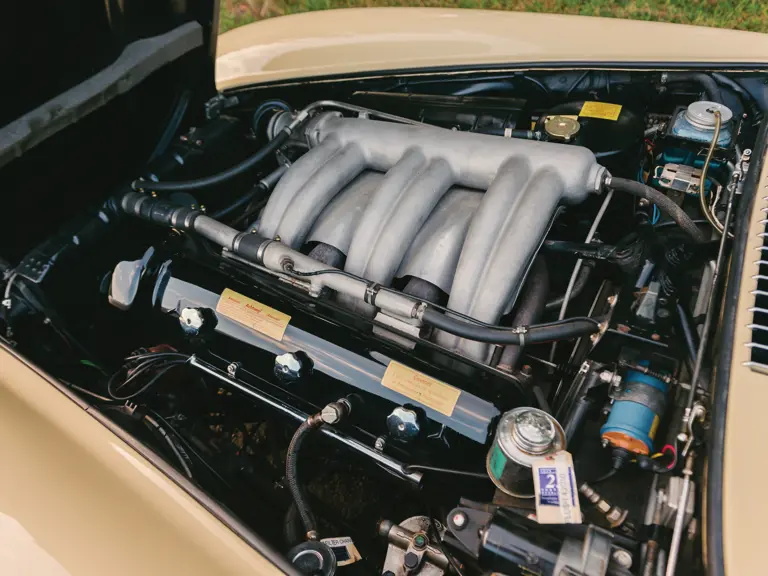

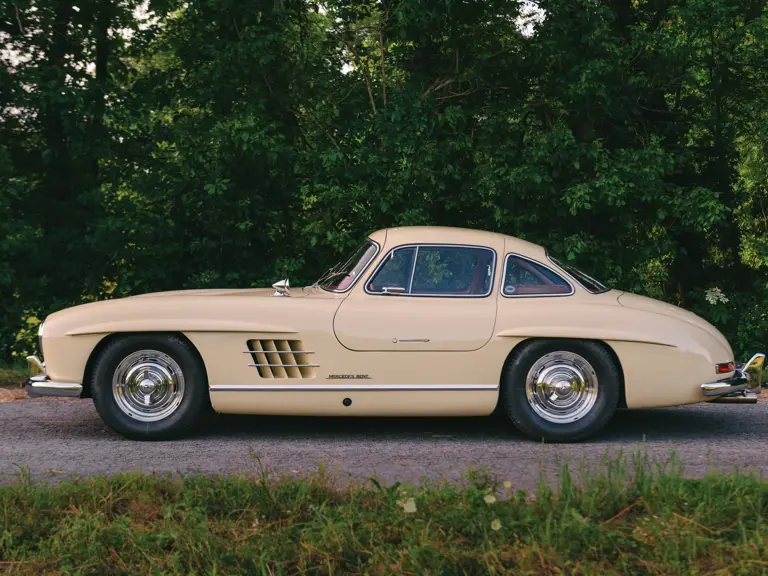
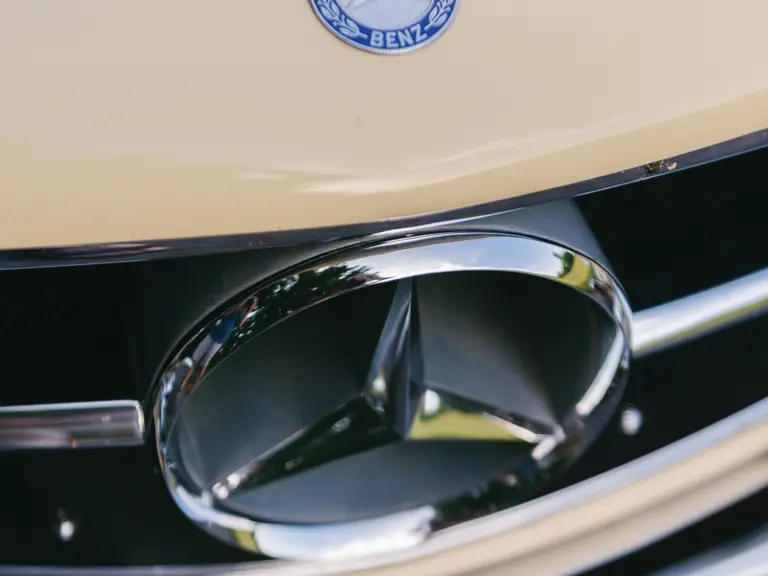
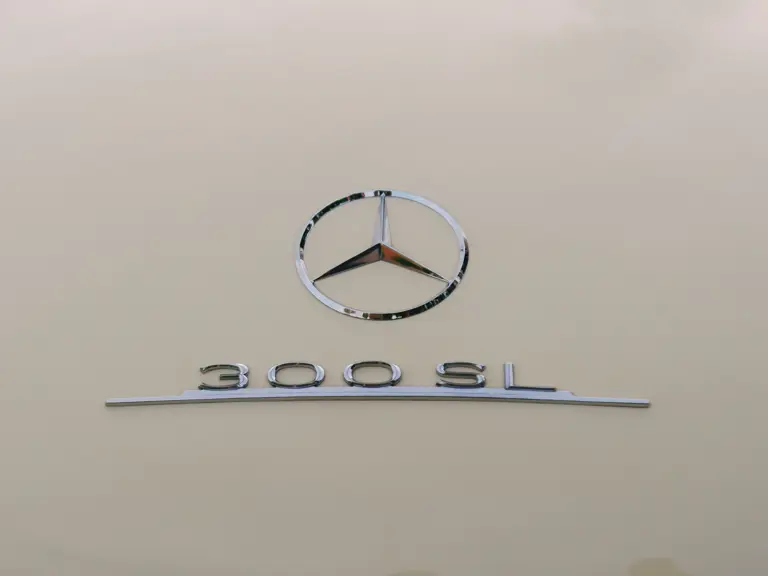

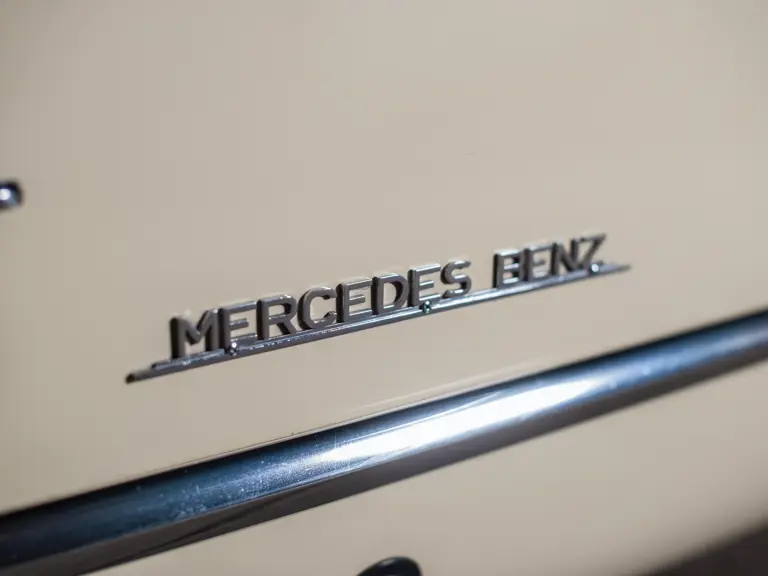
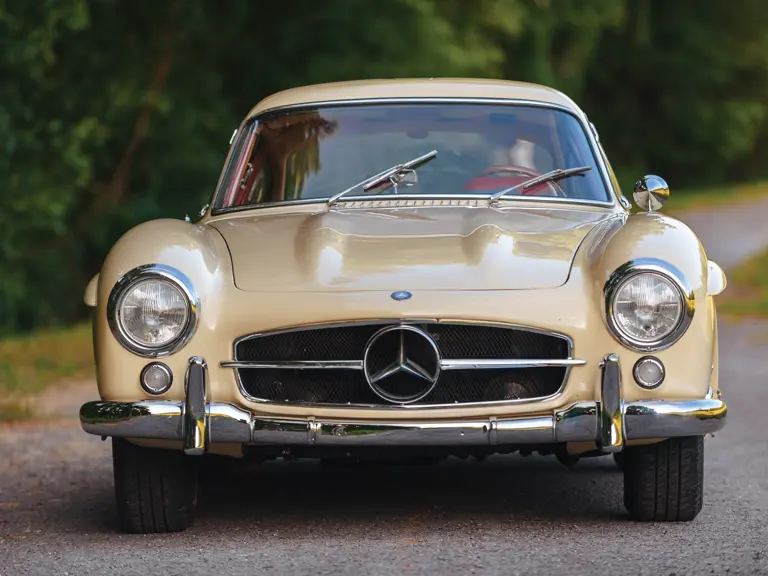
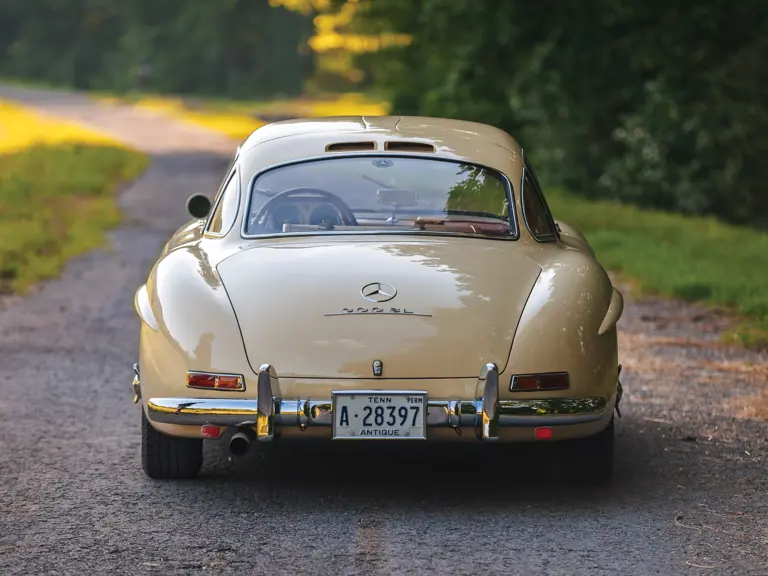
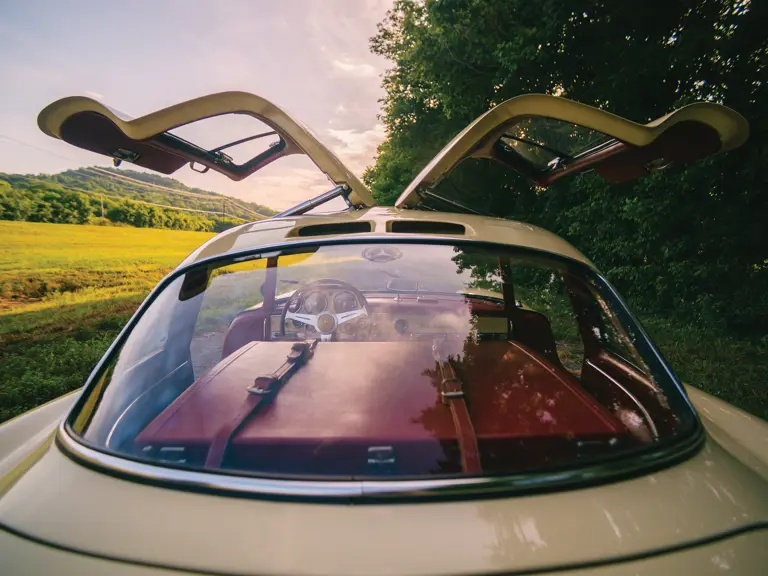
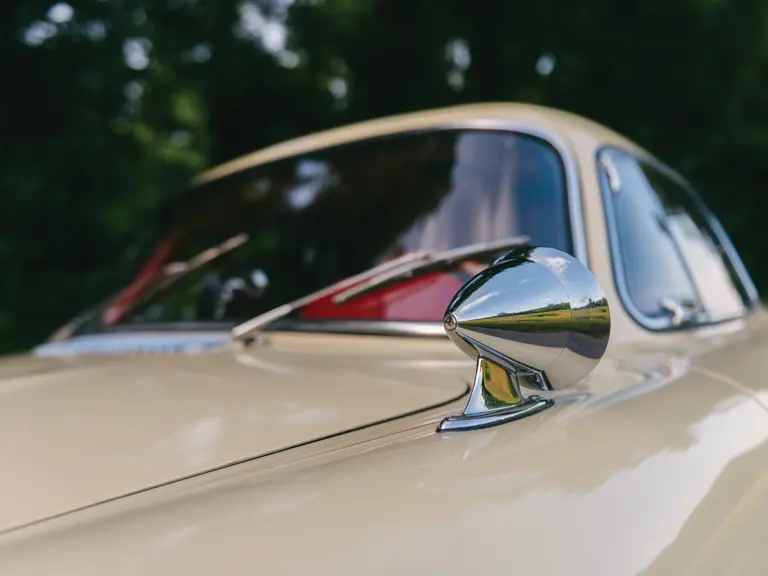
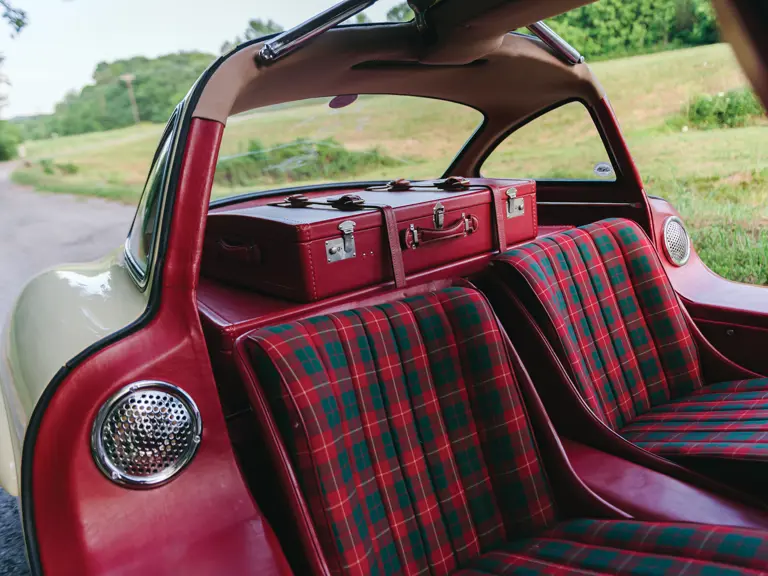
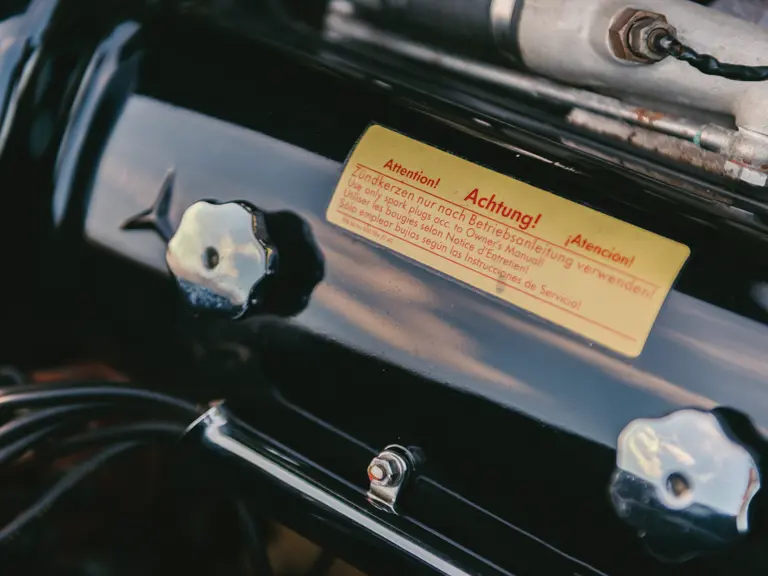
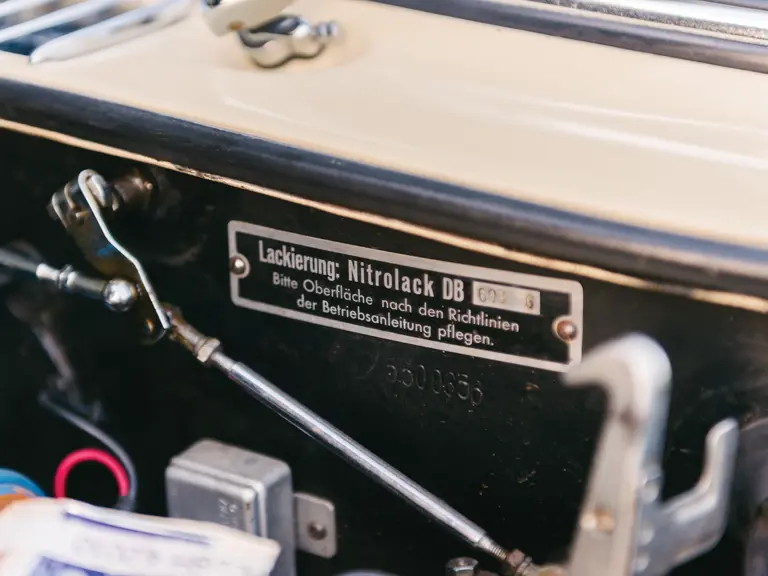
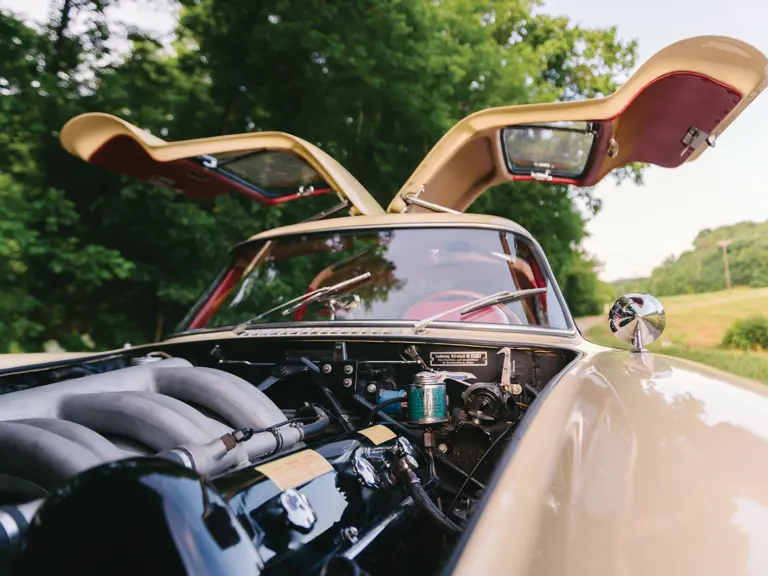
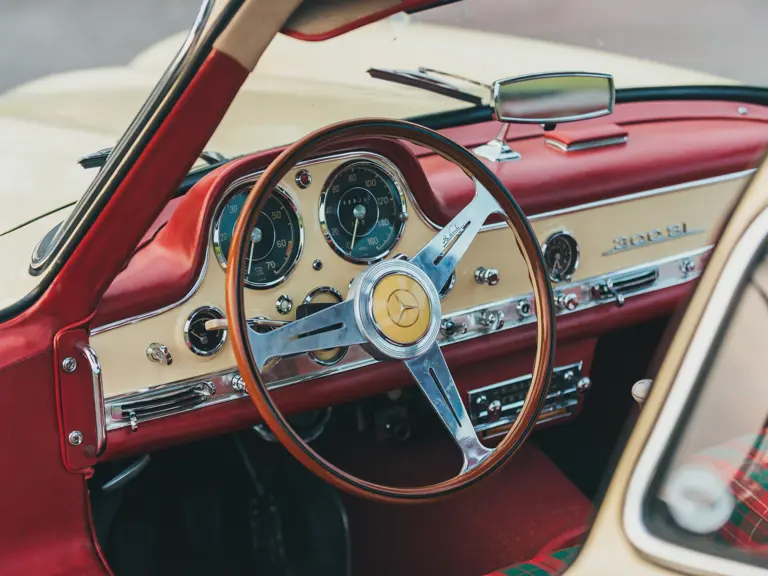
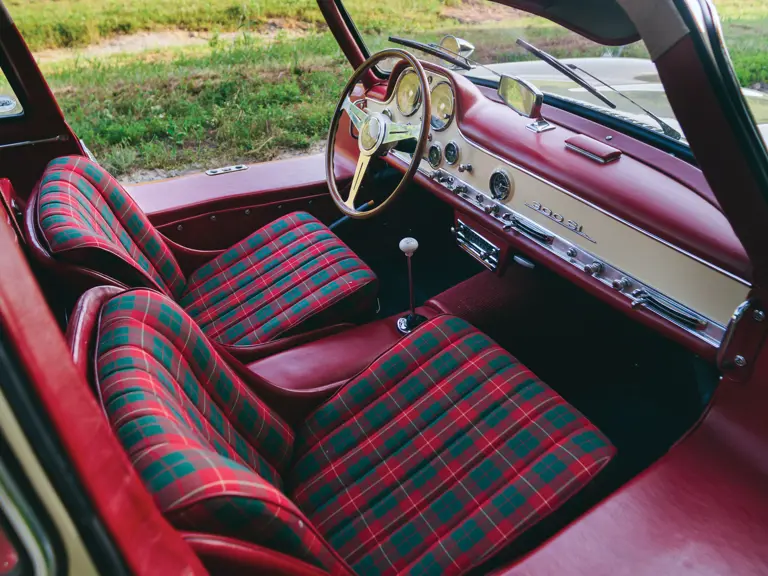
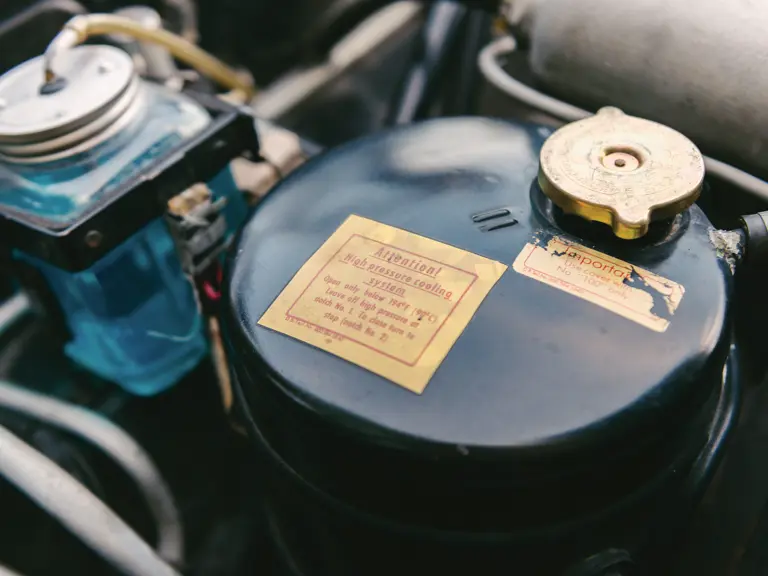
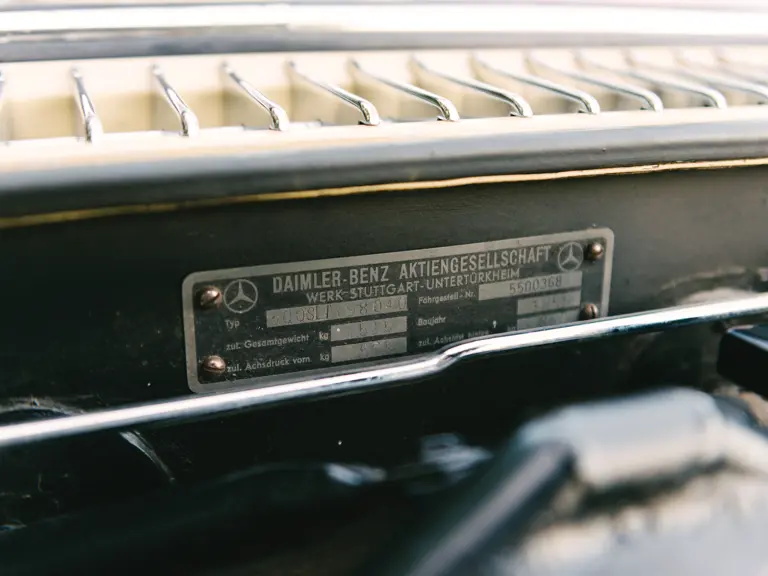
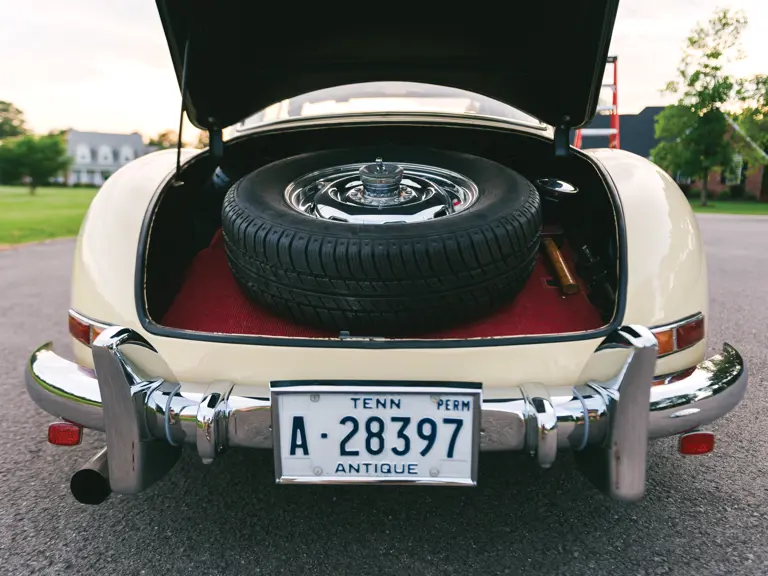
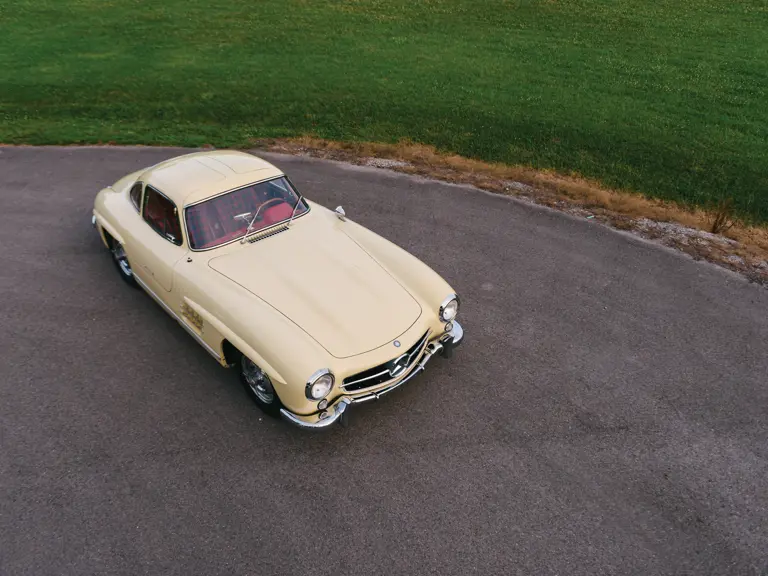
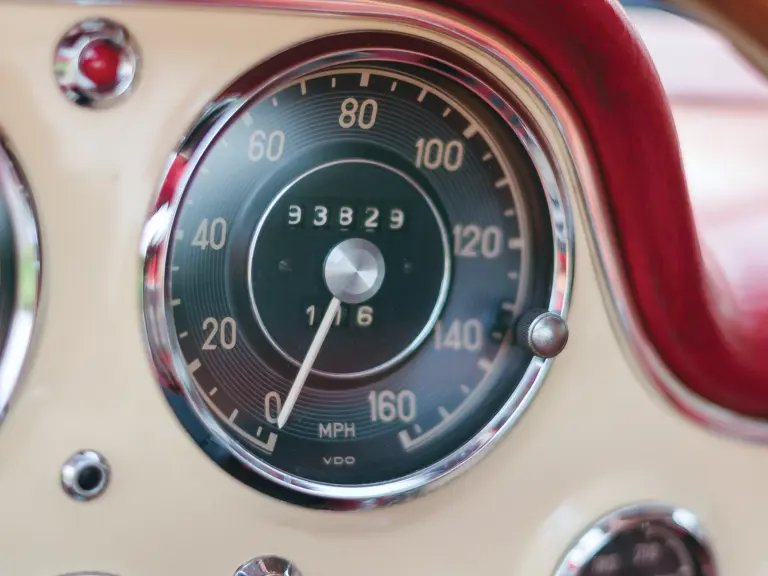
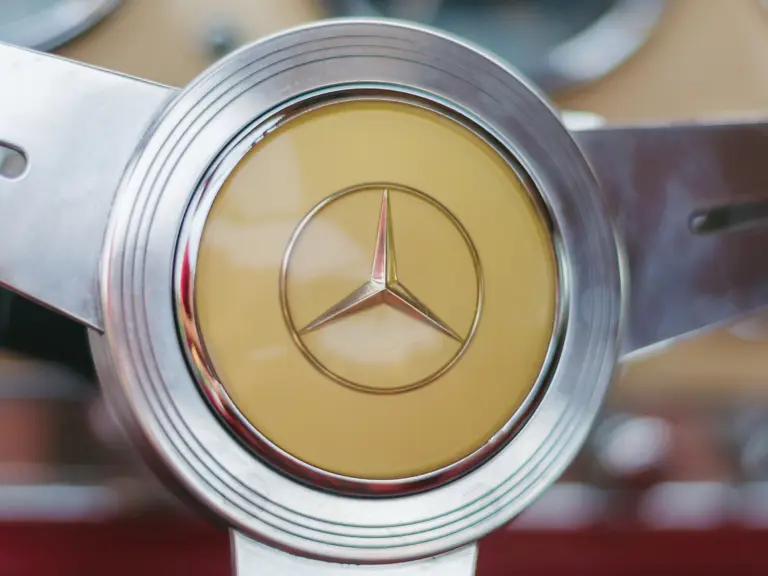


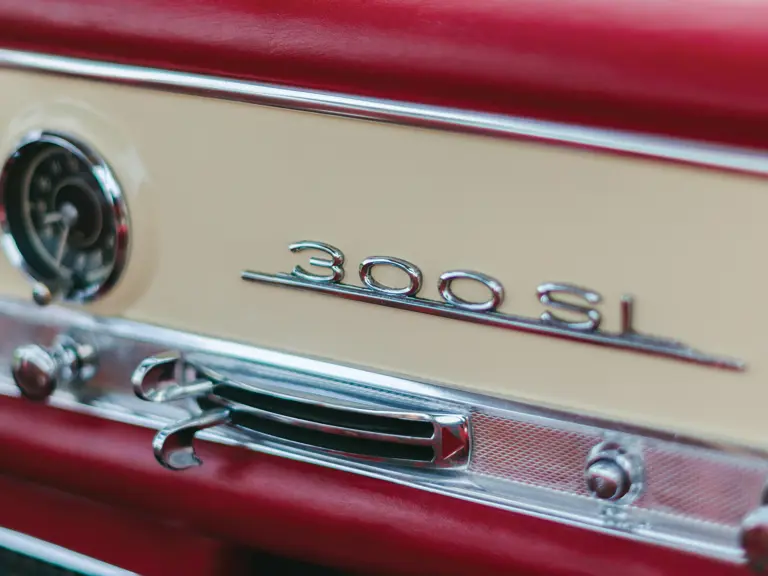
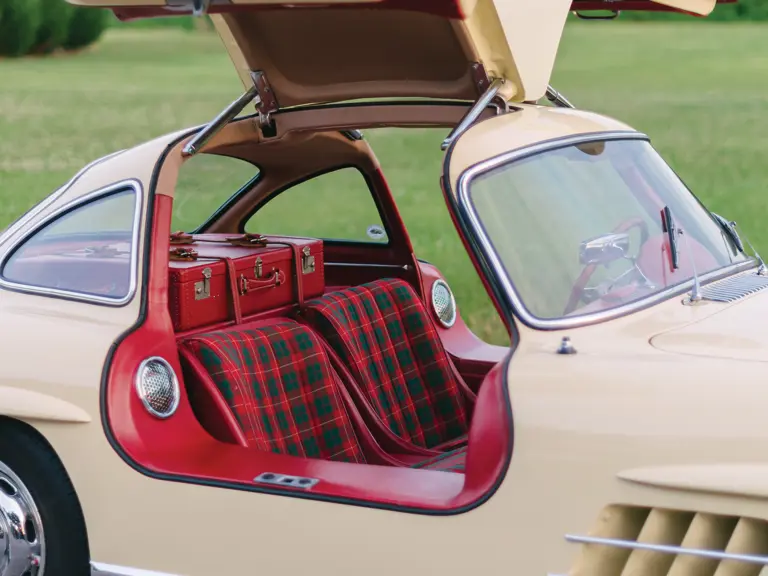
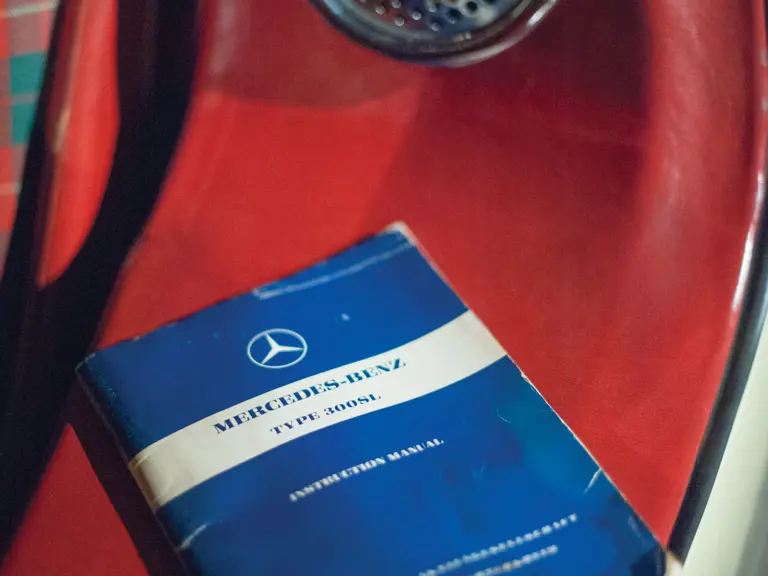




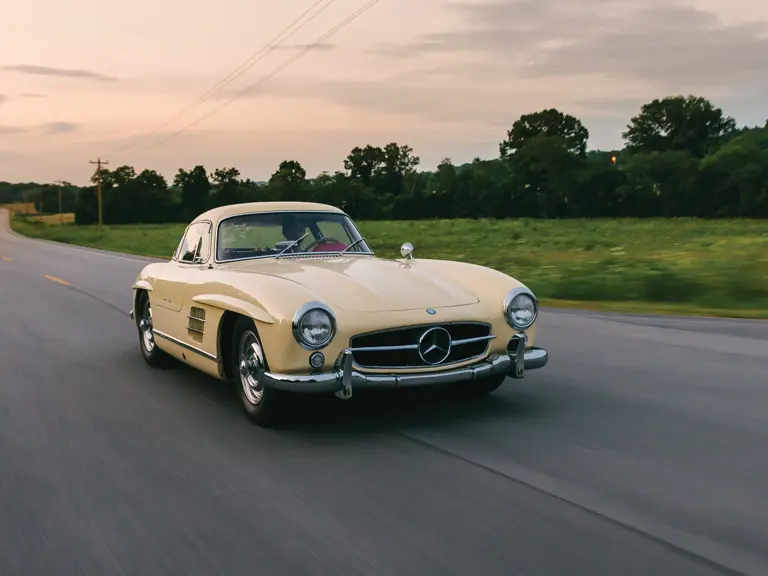


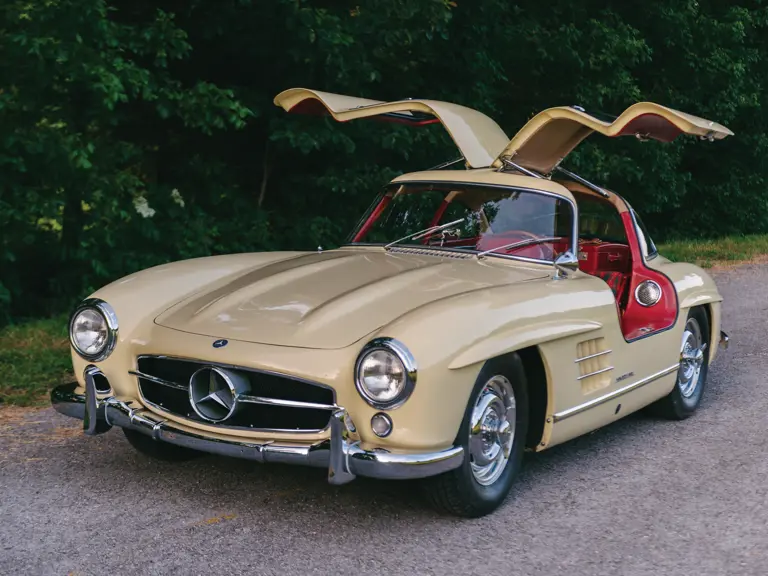
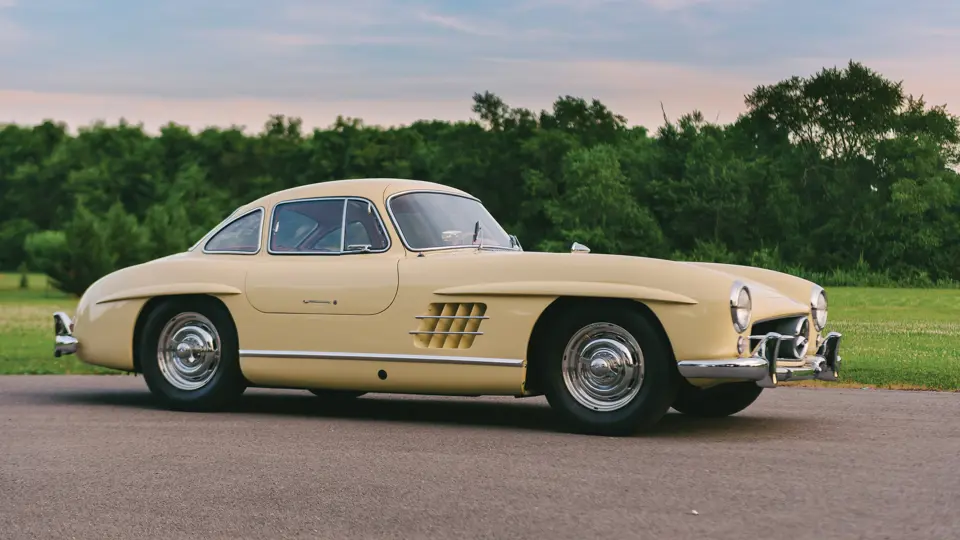
 | Monterey, California
| Monterey, California
